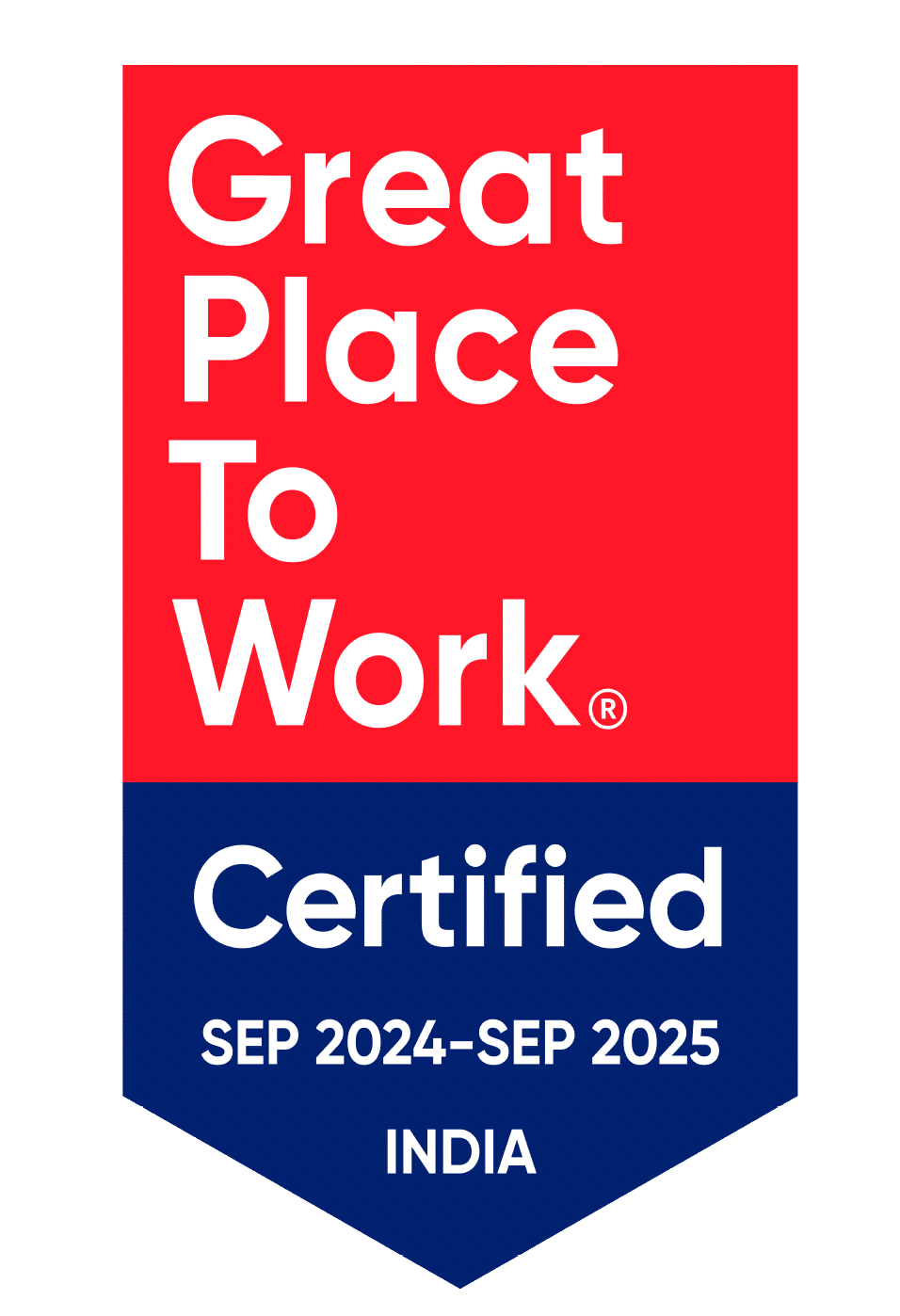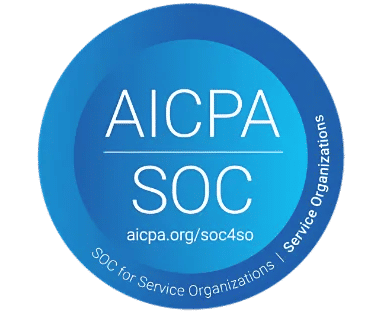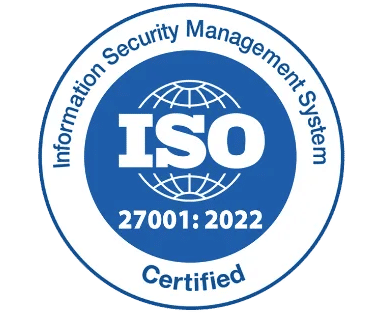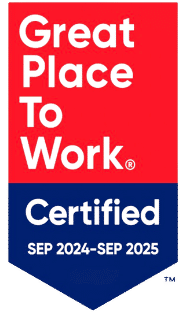Contract Risk Assessment Explained | Importance & Benefits

Companies often face legal and financial risks due to unclear contract terms, non-compliance, or overlooked details. Managing high volumes of contracts makes it even more challenging to ensure accuracy and mitigate risks.
But how can you stay efficient while reviewing multiple contracts? A well-structured contract risk assessment evaluation is the solution helping you streamline the process and catch potential risks before they escalate.
By systematically identifying problematic areas within contracts, organizations can proactively address concerns, minimize liabilities, and ensure all agreements align with business objectives and legal requirements.
In this guide we will walk you through contract risk assessment and how it improves your process that helps you identify mitigate and prevent potential risks.
What is Contract Risk Assessment?
It is the process of analysing and evaluating potential risks before entering into a contractual agreement with another party.
Its primary purpose is to help businesses make well-informed decisions about whether to proceed with a contract and determine the necessary safeguards to reduce risk exposure.
A comprehensive approach involves examining contract terms, identifying possible business risks, evaluating their probability and impact, and implementing strategies to manage or mitigate them effectively.
The Importance of Understanding Contract Risk Assessment
Understanding the process offers several key benefits that can help your business stay on track and thrive. Here is how it helps:
1) Provides Clarity and Confidence in Every Agreement
- It helps you understand all the terms of the contract, making sure there is no confusion or surprises.
- Gives you the confidence to negotiate, knowing exactly what to expect and how to get the best deal.
- Keeps your business on track by preventing hidden risks from becoming big problems.
2) Ensures Financial Security and Smooth Operations
- By reviewing financial terms early, you can avoid unexpected costs and penalties.
- Helps identify risks that might affect your operations, such as delivery delays or missing resources.
- Allows you to plan better, ensuring everything runs smoothly without wasting time or resources.
3) Gives You the Power to Negotiate Better Terms
- Helps you secure the best terms for your business, making sure you are getting the right deal.
- It enables you tackle issues before they come up, making negotiations faster and easier.
- Builds strong, fair relationships with partners, as it shows your are prepared and committed to working together.
By thoroughly assessing contract risks, your business can ensure clear agreements, stronger financial stability, and better partnerships.
Contract Risk Assessment Roadmap: 10 Essential Factors to Consider
A key element of any contract risk management strategy is developing a contract risk assessment checklist and systematically applying it to new contracts. This checklist should highlight potential risk areas and assess their impact.
By following this process, organizations can effectively manage and mitigate risks in daily operations.
1) Understand Your Contract Responsibilities
Before signing any contract, it is crucial to fully understand what you are committing to. Think of it like making a promise you need to know exactly what is expected of you to avoid future problems. To break it down, ask yourself:
- What tasks or responsibilities am I agreeing to?
- Do I have the resources and capability to fulfil them?
- How much time and money will it take to meet these commitments?
- Are there any unclear terms that could lead to confusion or disputes?
Once you have a clear picture of your responsibilities, the next step is to plan how you will handle them by reviewing the timeline and key deadlines. This way, you can stay prepared and avoid unexpected challenges.
2) Assess Your Timeline
Entering a contract means taking responsibility for completing specific tasks within a defined period. To manage this effectively, consider these key aspects:
- The timeline for deliverables and whether you have the resources to meet them
- Potential financial penalties for missing deadlines
- The impact if the other party fails to fulfil their obligations on time
Keeping track of contractual commitments is a crucial part of risk management. Contract management software can simplify this process by sending automatic reminders for critical deadlines, such as renewals, cancellations, or scheduled reports. This helps ensure compliance and prevents costly oversights.
3) Review Agreement Terms
This step is about ensuring transparency and fairness for everyone involved. Key aspects to consider include:
- Costs & Payments – Confirm that payment terms are reasonable and align with expectations.
- Roles & Responsibilities – Clearly outline what each party is responsible for to maintain smooth collaboration.
- Assurances & Guarantees – Make sure commitments are well-defined to build trust and confidence.
- Resolution Process – Establish a straightforward approach for handling any concerns smoothly.
While discussions around agreements can take time, smart tools can help speed up approvals by automatically recognizing key details like pricing, duration, and terms making the process easier and more efficient for everyone.
4) Consider Location-Based Factors
Working with partners in globally offers great opportunities, but it is important to keep a few key factors in mind:
- Regional Rules & Regulations – Different areas have unique laws, such as the GDPR, which may differ from those in other regions.
- Quality & Delivery – Location can impact product quality, shipping times, and overall service reliability.
- Currency & Costs – Exchange rates and local pricing structures can influence the total cost of agreements.
- Legal Terms – Some contract terms may vary by region, so reviewing them carefully is essential.
To manage these factors efficiently, using a system that organizes contracts by location, company, and legal details can be helpful. Smart contract management tools simplify this process, making contract handling easier and more effective.
5) Understand Your Future Business Partner
Building strong business relationships starts with understanding who you are working with. Partnering with a new company can bring exciting opportunities, and doing some research upfront helps ensure a smooth and successful collaboration.
Here are key areas to focus on.
- Reputation & Trustworthiness – Look into the company’s background, customer feedback, and industry standing. Partnering with a reliable and ethical organization helps create a strong foundation for success.
- Financial Strength & Growth – A financially stable company is more likely to meet its commitments. Checking their financial performance can give you confidence in a long-term partnership.
- Work Culture & Business Approach – Understanding their processes, values, and communication style ensures that both parties are aligned, leading to a more productive and collaborative relationship.
Taking the time to learn about your potential partner not only reduces risks but also sets the stage for a successful and lasting business relationship.
6) Ensure Essential Clauses Are Included
Every business has important terms that should be present in all contracts to ensure transparency, protection, and smooth collaboration. These clauses help define responsibilities and prevent potential risks.
- Scope & Deliverables – Define the exact services or products being provided, along with clear timelines and quality expectations, to prevent scope creep.
- Performance Standards & Penalties – Set measurable benchmarks for performance and outline any penalties for delays or failure to meet agreed standards.
- Exit Strategy & Transition Plan – Establish guidelines for ending the contract smoothly, ensuring minimal disruption to operations and a clear handover process.
Tools like CLM 365 as AI powered clause suggestions which helps businesses to get relevant clauses. These clauses based on your business needs helps create a contract that is not only legally sound but also practical and future-proof.
7) Enhance Protection with Optional Clauses
Optional clauses add flexibility and security to your contracts, helping you manage risks effectively.
- Adjustment Flexibility – Allows changes to timelines, pricing, or deliverables through a structured contract amendment process, avoiding the need for full renegotiation.
- Exit & Termination Terms – Defines clear conditions for ending the contract early, reducing financial or legal risks.
- Intellectual Property Rights – Ensures clarity on ownership and usage of creative work or proprietary assets.
Including the right optional clauses gives your business greater control and adaptability, making contracts more effective and future-proof.
8) Identify and Manage High-Risk Provisions
A well-structured contract should minimize risks while ensuring smooth execution. Reviewing certain clauses carefully can help prevent potential challenges and improve contract outcomes.
- Challenging Timelines – Ensure deadlines are realistic and achievable to prevent unnecessary stress and penalties.
- Complex Deliverables – Clearly define expectations for intricate tasks to avoid misinterpretation and ensure successful completion.
- External Dependencies – Identify clauses that rely on third parties and build safeguards to prevent delays or disruptions.
By proactively addressing these provisions, you can create a contract that protects your interests while fostering strong business relationships.
9) Stay Compliant with Ease
Keeping contracts aligned with regulations protects your business and strengthens trust. Here is how to ensure smooth compliance:
- Meet Legal & Industry Standards – Regularly check contracts to ensure they follow all necessary rules.
- Keep a Clear Record – Maintain an audit trail to quickly resolve disputes and prove compliance.
- Use Smart Tools – Electronic signatures and real-time updates help keep contracts accurate and up to date.
A proactive approach to compliance makes contracts more secure, efficient, and hassle-free.
10) Track and Manage Contract Updates
Contracts evolve through negotiations and revisions, which can introduce new risks. Keeping a clear record of all changes ensures transparency and minimizes potential issues.
Here is how to manage contract updates effectively:
- Monitor All Edits & Amendments – Track every modification to identify any added risks and ensure terms remain fair.
- Maintain Version Control – Keep a structured record of all contract versions to prevent confusion and errors.
- Ensure Full Visibility – Use tracking tools to see where the contract stands in the approval process, making collaboration smoother.
By staying organized and aware of every change, you can create well-structured, risk-free agreements that support long-term success.
How to Structure Contracts to Minimize Risks
By applying these contract structuring strategies, you are not just minimizing contract risk you are creating agreements that are clear, enforceable, and built for long-term success. When combined with a strong contract risk evaluation process, this approach ensures that every agreement aligns with your business goals, protects your interests, and fosters trust with your partners.
1) Establish Flexible Yet Protective Exit Strategies
Not all contracts last forever, and ending an agreement smoothly is just as important as starting one. Define the conditions under which either party can terminate the contract, whether for non-performance, mutual agreement, or external factors like regulatory changes.
- Clearly outline when and how the contract can end
- Allow enough time for both parties to prepare.
- Ensure responsibilities, payments, and handovers are well-defined.
The best practices, include a notice period for termination and define how outstanding payments, deliverables, or assets will be handled to prevent abrupt disruptions.
2) Clearly Define Scope and Expectations
A well-defined contract is more than just a legal document it is a roadmap for a successful and hassle-free business relationship. Clearly outlining what will be supplied, how it will be delivered, and when ensures that both parties are aligned, reducing the chances of confusion, delays, or disputes.
- Suppliers can plan production and deliveries efficiently, while buyers can manage inventory and resources effectively.
- This strengthens long-term relationships and opens doors for future collaborations.
- This clarity helps streamline deliveries, improves communication, and fosters a reliable business relationship.
Example: Instead of saying “The supplier will deliver materials regularly,” specify “The supplier will deliver 500 cartons of packaging material to Warehouse A by the 5th of each month.”
3) Set Clear Payment Terms for a Smooth Partnership
Well-defined payment terms create transparency and build trust between parties. Clearly outlining payment schedules, refund policies, and financial responsibilities ensures seamless transactions and prevents misunderstandings.
Key Considerations:
- Will payments be structured upfront, in instalments, or upon completion?
- How will delayed payments be managed to keep both parties aligned?
- Are there any incentives for early payments or guidelines for handling adjustments?
By addressing these details upfront, you create a fair and predictable financial arrangement, fostering a strong and long-lasting business relationship.
4) Electronic Signatures Are Essential for Modern Contract Management
Electronic signatures offer a fast, secure, and legally binding way to sign contracts without the hassle of printing, scanning, or mailing documents. In today’s digital-first world, businesses need a quick and efficient way to execute agreements while ensuring security and compliance.
- Faster Execution – Instantly sign and approve contracts from anywhere, eliminating delays.
- Enhanced Security – Provides encryption, authentication, and a detailed audit trail for compliance.
- Error-Free Process – Ensures all required fields are completed, preventing missed signatures or misplaced documents.
5) Establish Clear Performance Metrics
Contracts should define success in measurable terms. Setting clear performance benchmarks ensures that both parties meet their commitments and remain accountable.
- Define expected response times and delivery schedules to ensure timely execution.
- Set measurable quality standards to maintain consistency and avoid disputes.
- Outline key milestones and deadlines to track progress effectively.
Example: Instead of “Deliver the project as soon as possible,” specify “The project must be completed by June 30, with weekly progress updates.“.
How Contract Risk Assessment Supports Legal Compliance
Contracts are more than just agreements—they are legal safeguards for your business. A thorough contract risk evaluation ensures that every agreement aligns with current laws and industry regulations, reducing the risk of compliance issues.
By reviewing contracts carefully, you can spot outdated terms or missing clauses that might lead to legal trouble. This proactive approach keeps your business in line with changing regulations, preventing costly fines and disputes. It also helps you establish clear responsibilities, so all parties understand their obligations from the start.
A well-managed contract risk assessment process also provides a clear audit trail. Tracking changes, approvals, and key clauses ensures you have proof of compliance whenever needed. This makes audits smoother and helps resolve disputes faster.</span id=”conclusion”>
Ultimately, the risk evaluation is not just about avoiding problems it is about creating strong, reliable agreements that protect your business and support long-term success.
Conclusion
Effective contract risk assessment is more than just a legal safeguard it is a strategic approach that empowers businesses to operate with confidence, clarity, and control. By leveraging CLM 365, organizations can ensure contracts are not only legally sound but also strategically designed to support growth, protect assets, and foster seamless collaboration.
Take control of your contracts today. Try CLM 365 and build risk-free, compliant, and future-proof agreements that drive business success.
Frequently Asked Questions
What are the common risks found in business contracts?
Some common risks include unclear obligations, unrealistic deadlines, financial penalties, third-party dependencies, and compliance issues with laws or industry regulations.
How can businesses proactively manage contract risks?
Businesses can use structured contract assessment checklists, legal reviews, risk management process to track risks and mitigate potential issues.
How often should businesses review contracts for risk?
Businesses should review contracts at key stages before signing, during execution, and before renewal to ensure ongoing compliance and risk mitigation.
What role does AI play in contract risk assessment?
AI-powered tools analyse contract terms and suggest better clauses to minimize potential liabilities.










_svxLrd-8yH.png)

_2VYSFUTN5m.png)

_JiluXJRGNl.svg)

_2djTKNocf.png)





_Rapo0hRMBy.png)










